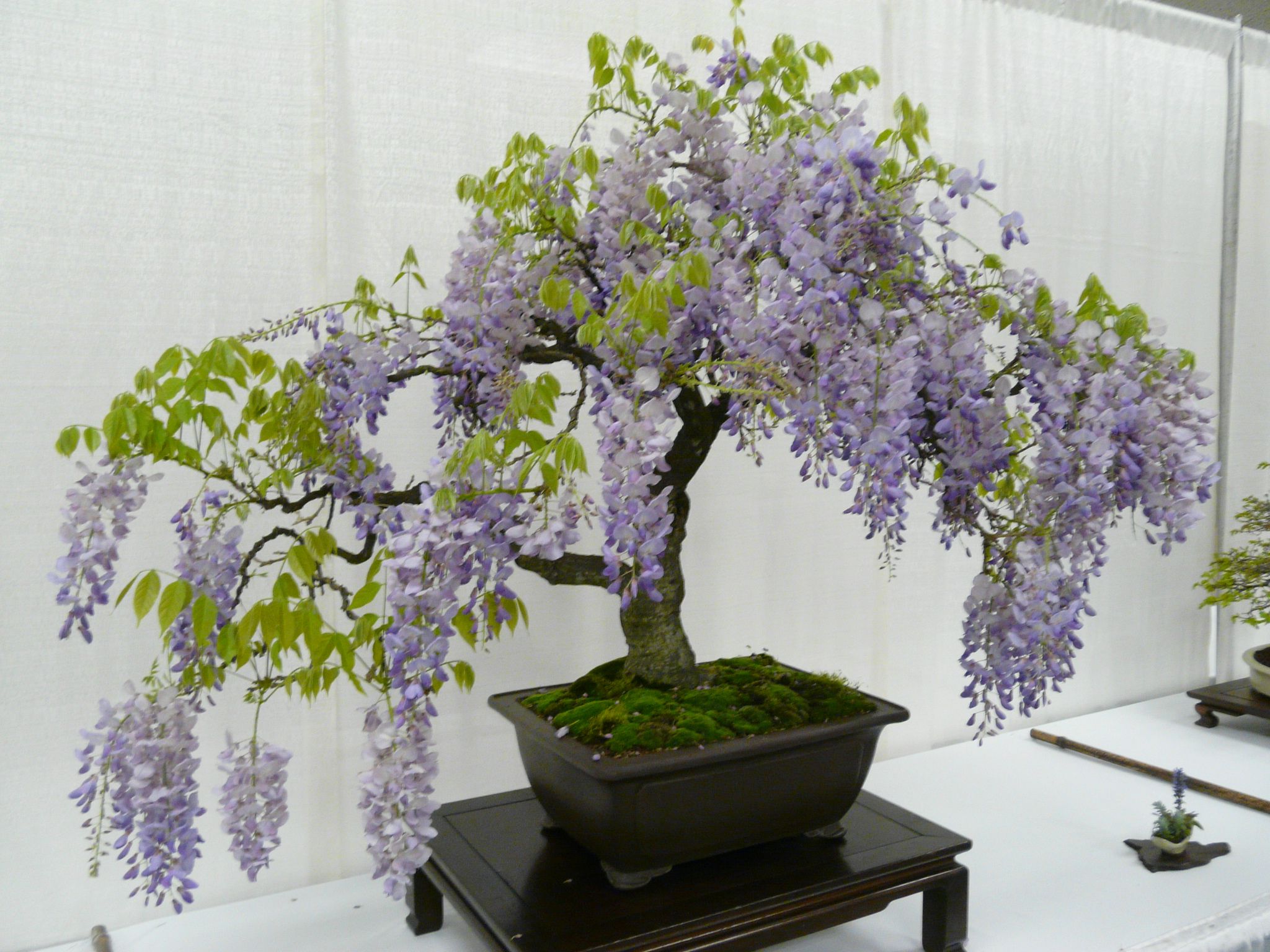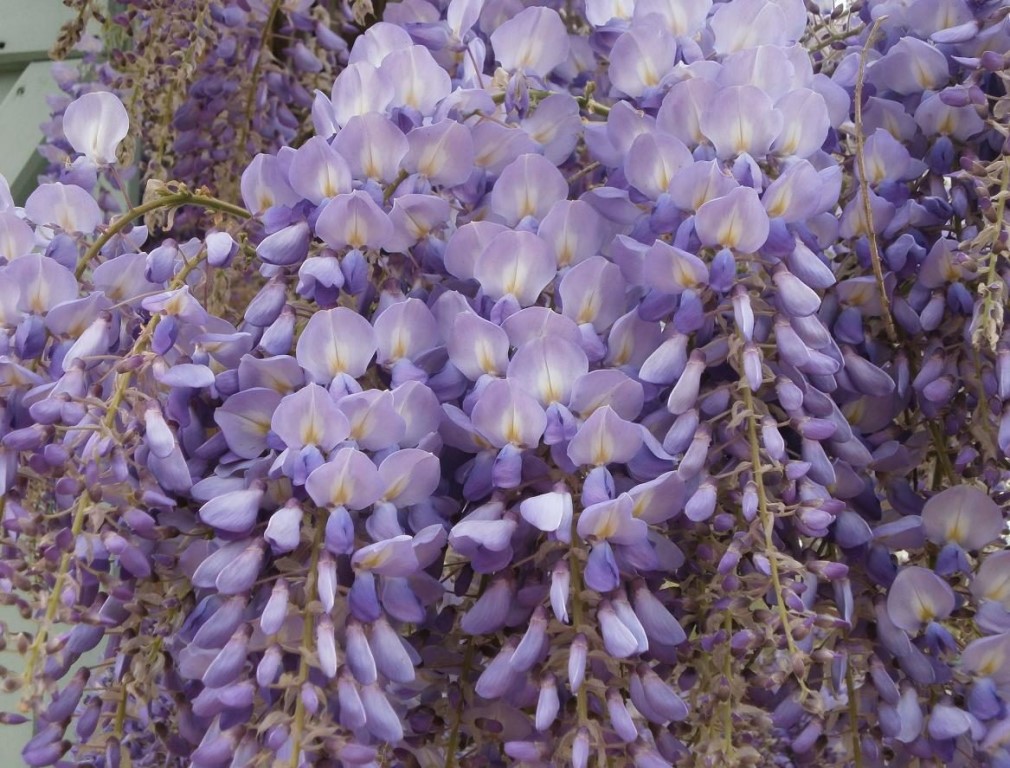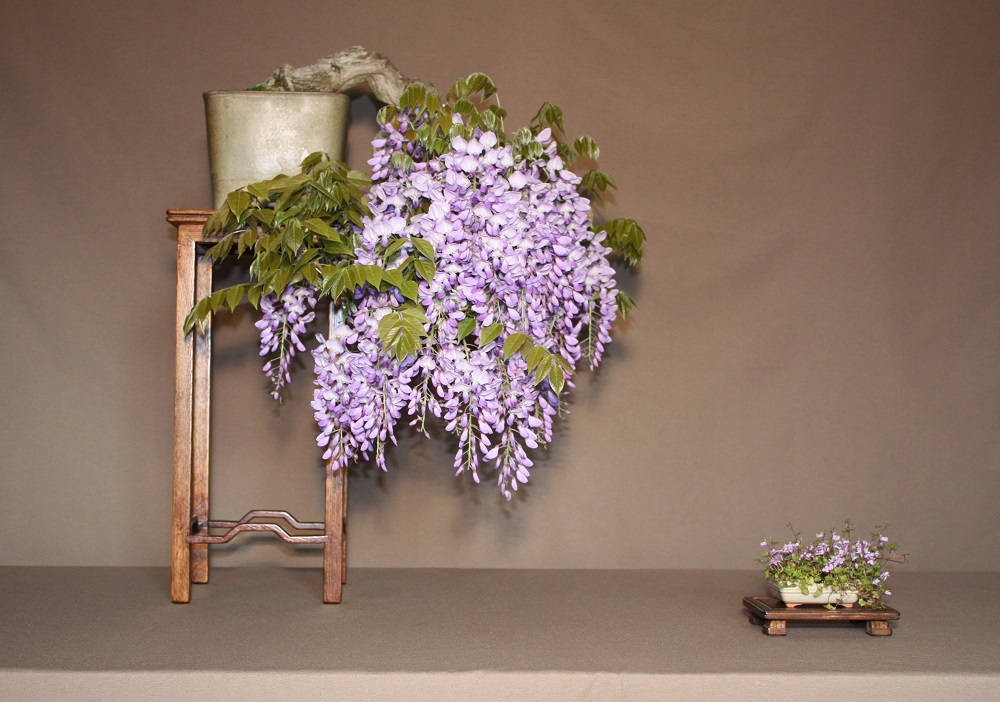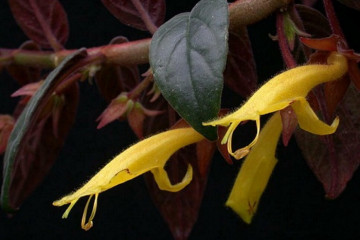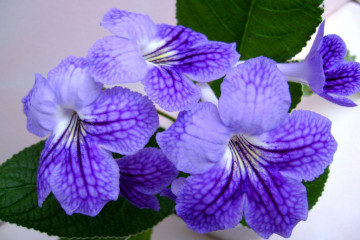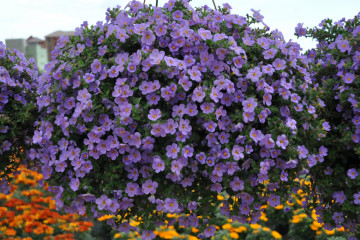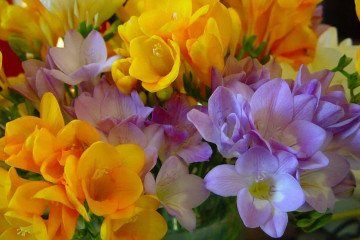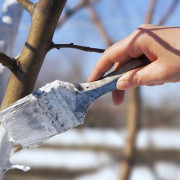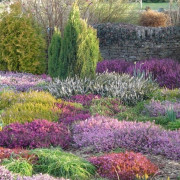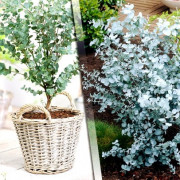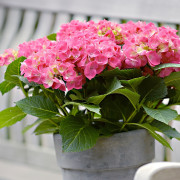Wisteria - care and cultivation at home
Content:
Wisteria, or wisteria, is a woody vine with magnificent inflorescences. Flowing lilac tassels with a pleasant light scent of lilac are rightfully called lilac rain. At home, it can braid the entire wall of a balcony or loggia.
Care features
When you first meet a plant, it is difficult to determine if wisteria is a tree or a shrub. Neither one nor the other. This is a vine, but it can grow as a shrub or as a tree. Flexible shoots are able to take any shape, twine around supports or their own shoots.
Caring for a beauty takes time and patience.
Wisteria growing in a comfortable place tolerates well care and cultivation at home. Basic requirements for active growth of vines:
- temperature. In the summertime, the pots with the plant are taken out to the balcony or to the garden. Wisteria is able to withstand any heat (at the right level of humidity). In the fall, a dormant period is needed, therefore, for several months, the temperature of the exotic content should not exceed 10 ° C. In January, with the awakening of the buds, the flower is smoothly accustomed to an increase in heat and transferred to apartment conditions;
- the plant is photophilous, therefore only the south side will provide the amount of light that is necessary for growth and flowering;
- from the beginning of the active growth period - spring, watering is needed moderate, no more than twice a week. From autumn, watering is reduced as much as possible. Water the plant along the edge of the pot, without eroding the soil at the base of the shoot and not exposing the roots;
- in the summertime, high humidity is maintained by regular spraying of greenery and shoots. During the rest period, this procedure is not needed by the flower;
- the soil needs light, airy, easily permeable moisture and air. The nutrient content of the soil should be high. Good soil will be made of equal parts of sod soil, humus, high peat and river sand;
- during the budding and flowering period, the plant needs additional fertilizing with mineral fertilizers once a week. In season, the flower is watered with water with the addition of chalk.
Features of winter care
For the full existence of a flower, every year you need to organize a dormant period. From autumn, after all the greenery has fallen off, you need to place the pot in a cool room, reduce watering, remove fertilizing and additional moisture.
If the wisteria shrub grows on a glazed balcony, where the temperature in winter does not exceed 10 ° C, it will remarkably endure the sleeping period there.
From the beginning of January, leaf and flower buds begin to wake up in wisteria. The temperature should be raised gradually. Within two weeks, by transferring the pot to a warmer room for a while. A sudden change in temperature will destroy the plant.
When and how wisteria blooms
Vine begins to throw out flower stalks in March-April with proper awakening. Flowering lasts from two weeks to two months. It all depends on the variety and conditions of detention. The shape of the flowers corresponds to the legume family, to which the wisteria belongs.
The palette of wisteria is not too large: pink, blue, white or lilac waterfalls.To maintain active flowering, regular mineral feeding is needed.
Pruning
Stimulates flowering and growth by pruning. After flowering, the shoots are cut by two-thirds, and in February-March - up to 2-3 good buds.
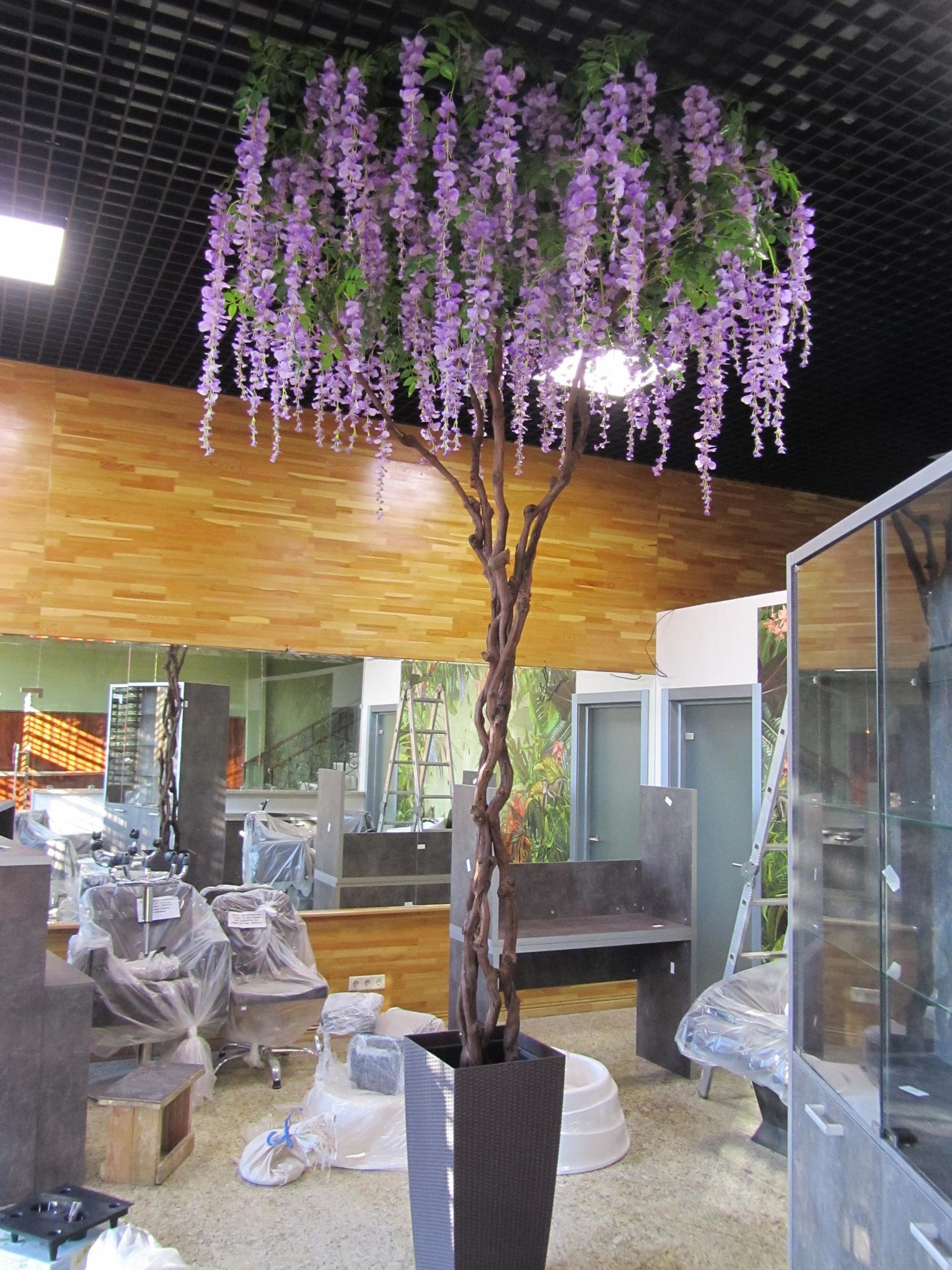
If wisteria give the shape of a trunk, you need to leave one or more powerful shoots, removing all lateral and basal
When grown in the form of a liana or a bush, part of the side shoots must be cut off so that the flower does not waste energy on them.
Reproduction
To grow a new plant, you need to choose one of the following methods:
- seeds. Seeds that have been hatched on wet gauze are sown in January in moist soil (the mixture is the same as for an adult plant). The container is tightened with foil or covered with glass. Soil temperature should be at least 23 ° C. After the sprouts appear, you need to slowly harden them without film and expose them to the sun. The seedlings are ready to be planted in separate pots when two true leaves appear on them. Homemade wisteria obtained from seeds is unlikely to bloom;
- propagating by cuttings is the most reliable and fastest way. Shoots 20 cm long are cut obliquely 2 cm below the last leaf bud. Rooted by maintaining soil moisture. It is also necessary to observe the temperature regime, as when growing seeds;
- garden wisteria is convenient to propagate by layering. If you grow in the apartment in the form of a liana, then you can also use this method. You need to make an incision on the layer and dig it into a new pot of soil. Take care of it like an adult plant and after a month you can check for root formation;
- propagating by grafting cuttings to the root system is difficult. Experienced breeders of wisteria are engaged in this and most often for the garden option of breeding these magnificent vines.
Wisteria transplant
The root system of wisteria is poorly developed and grows slowly. Planting pots are small, low and wide. The young plant is transplanted by the transshipment method once a year as the pot is filled with roots. An adult plant is transplanted once every 3-4 years. If wisteria grows in the form of a weaving liana, transplantation will be almost impossible, therefore, once every 2-3 years, the top layer of soil (7-9 cm) is replaced in an adult plant.
Possible problems in growing wisteria
In the course of growing, growers may face the following difficulties:
- lack of flowering. If the plant is properly cared for, but there is no flowering, it means that it grows in a pot that is too spacious. With a large volume of soil, the flower will only grow the root system and greenery;
- during flowering, leaves may begin to fall off profusely. This is a sign of a lack of nutrients. More nutritious soil and top dressing are needed;
- if the soil contains a large amount of alkali, the leaves may begin to turn yellow. This is chlorosis. Mineral fertilization of the soil will help.
Wisteria is a great decoration, both in the garden and at home. She will definitely make up for all the time spent on care with her beauty. In regions such as Siberia, growing a garden option will not work, so indoor wisteria would be an excellent solution.

